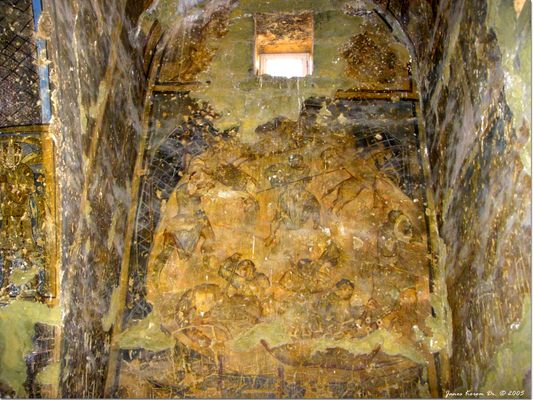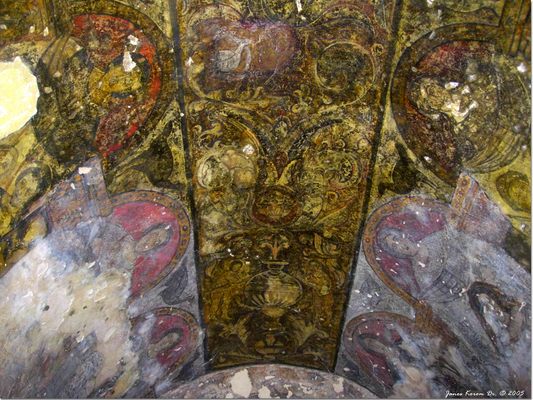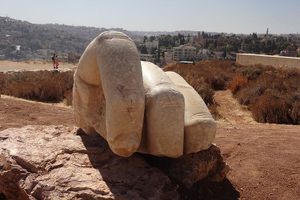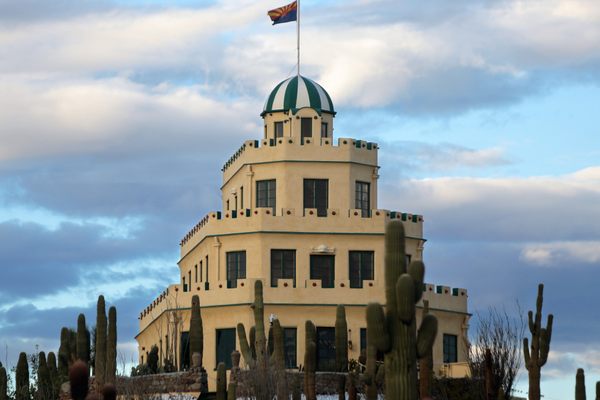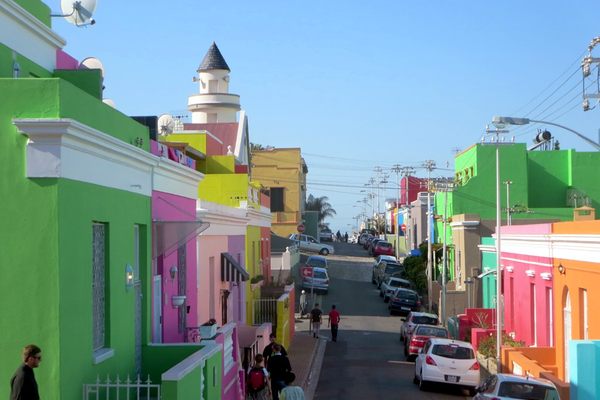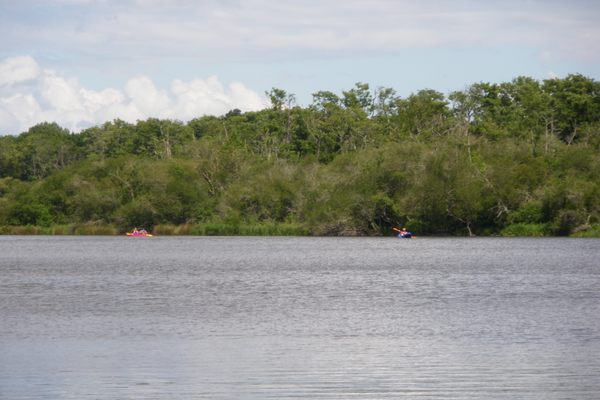About
Standing in the Jordanian desert some 50 miles east of Amman, Qasr Amra is one of several qusur or "desert castles" built under the Umayyad Caliphate and probably the best known extant example of these buildings characteristic of the Damascus-based dynasty.
Most likely constructed somewhere between 723 and 743 by Walid Ibn Yazid (the future caliph Walid II), Qasr Amra was a small royal retreat consisting of an audience hall and baths. In addition to simply being a well-preserved Umayyad structure, Qasr Amra is particularly notable for the frescoes that adorn the interior walls and ceilings.
The frescoes are significant because they provide a rare glimpse at a largely secular and transitional style of early Islamic art. Because the frescoes were painted near the beginning (relatively speaking) of the Islamic era, and under the Umayyads -- whose power base was in Syria, rather than the Arabian peninsula -- the frescoes are perhaps surprisingly figurative and display clear Byzantine and Persian influences, representing what one antiquarian described as "an artistic renaissance of Hellenistic art."
The subject matter varies by room. Scenes in the audience hall depict activities as hunting, eating fruit, drinking wine, and peeking at nude women. One panel in this room also shows six kings -- the Byzantine Emperor, the Persian Shah, the Visigoth king of Spain, the Negus of Ethiopia, and two more who are most likely Turkic and Indian or Chinese rulers — all paying homage to the Caliph, with inscriptions in Arabic and Greek.
Within the baths, the apodyterium (changing room) features animals doing human things, like playing music; the tepidarium (warm bath) is decorated with natural scenes and plants and trees, and more nude women; and the caldarium (hot bath) boasts a domed ceiling bearing the zodiac and various other constellations. The stellar imagery in the caldarium is particularly significant, as it is the earliest known example of the night sky being depicted on a non-flat surface.
Though seemingly incongruous given the more abstract and geometric styles in later Islamic art, the frescoes of Qasr Amra were apparently in accordance with the medical opinions of contemporary Arab doctors, who believed bathing drained the bather of the three "vital principals" (the animal, the spiritual, and the natural) and that baths should be decorated to refresh these principals.
The site also bears evidence of an accompanying defensive castle that no longer stands, as well as a sophisticated animal-powered hydraulic system that provided water to the baths and most likely irrigated a garden. Today, Qasr Amra is a UNESCO World Heritage Site.
Related Tags
Ancient Ruins & Legendary Landmarks of Jordan
Explore Mesmerizing Jordan: From Petra to Greco-Roman Ruins.
Book NowCommunity Contributors
Added By
Published
January 14, 2016
Sources
- http://whc.unesco.org/en/list/327
- http://archive.aramcoworld.com/issue/199005/qasr.amra.htm
- http://www.metmuseum.org/exhibitions/listings/2012/byzantium-and-islam/blog/where-in-the-world/posts/qusayr-amra
- http://archnet.org/sites/4772
- https://en.wikipedia.org/wiki/Qasr_Amra
- https://historyfangirl.com/unesco-world-heritage-site-quseir-amra-jordan/


